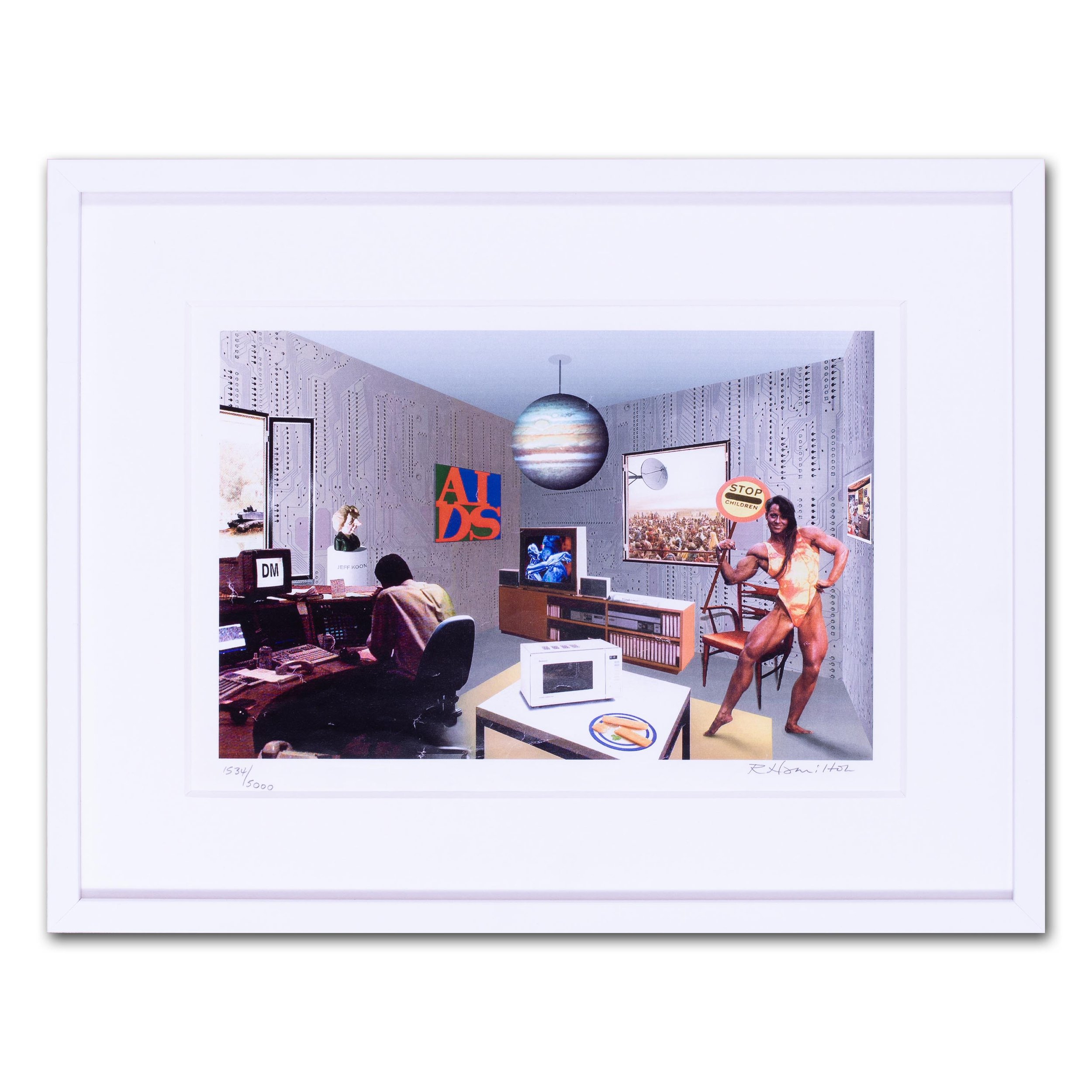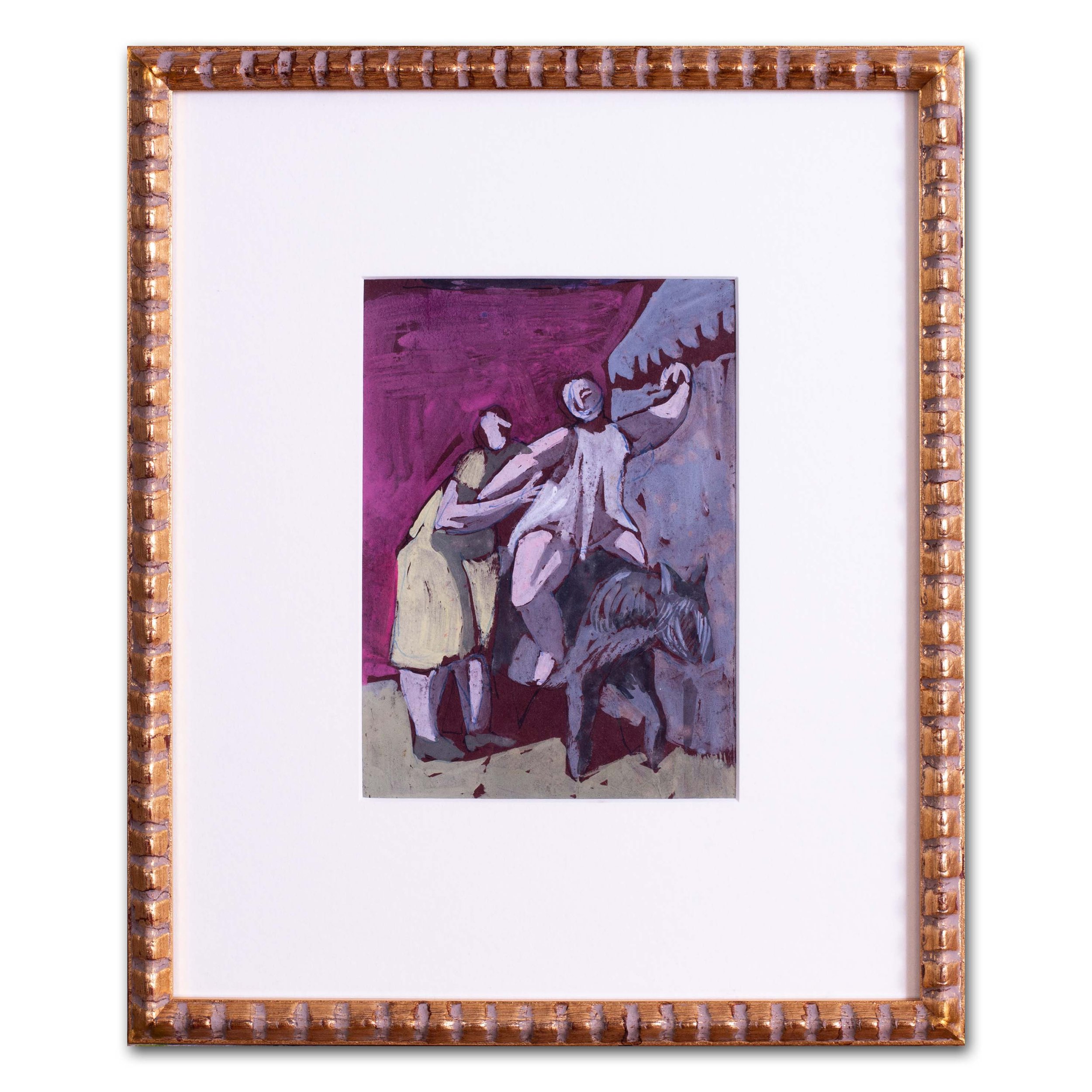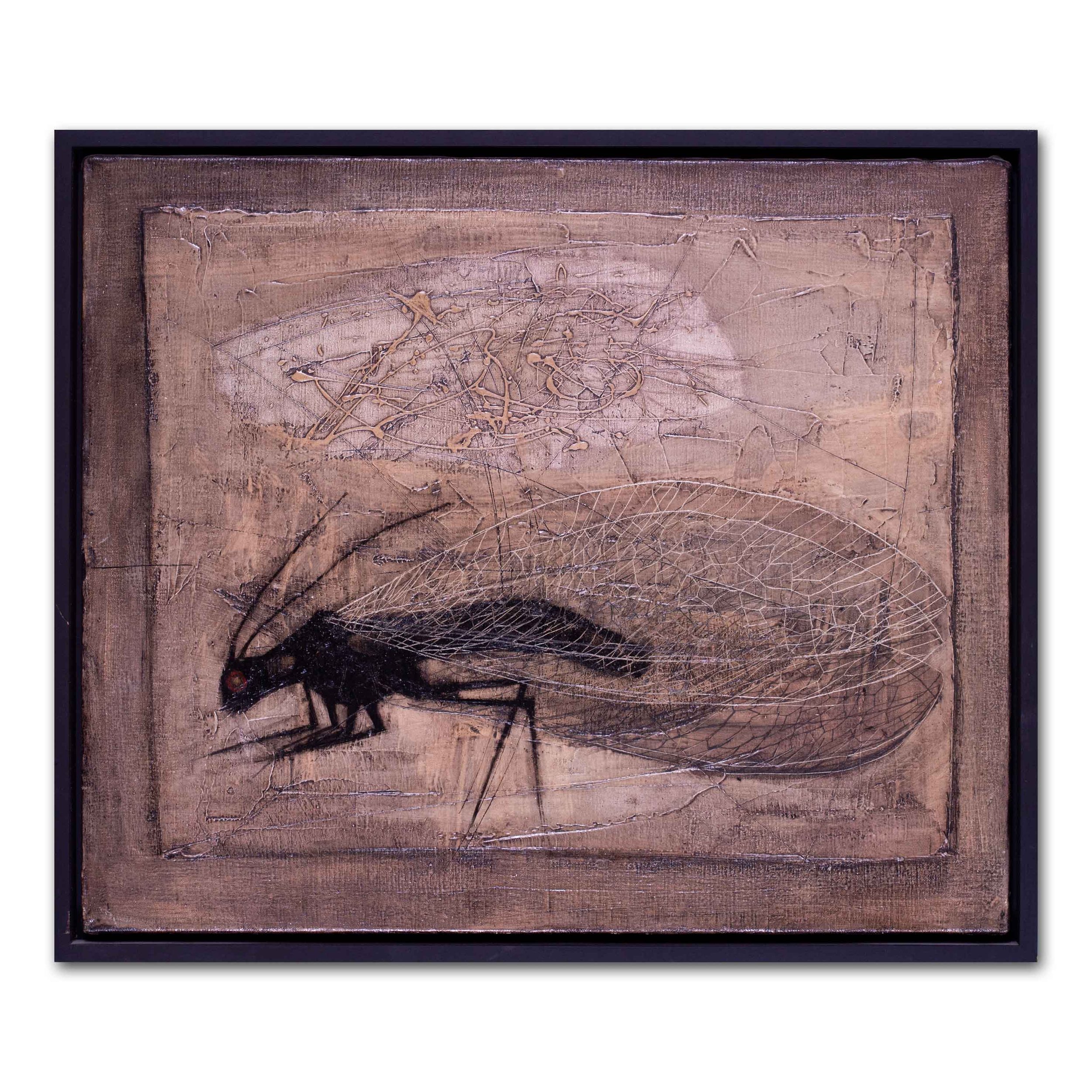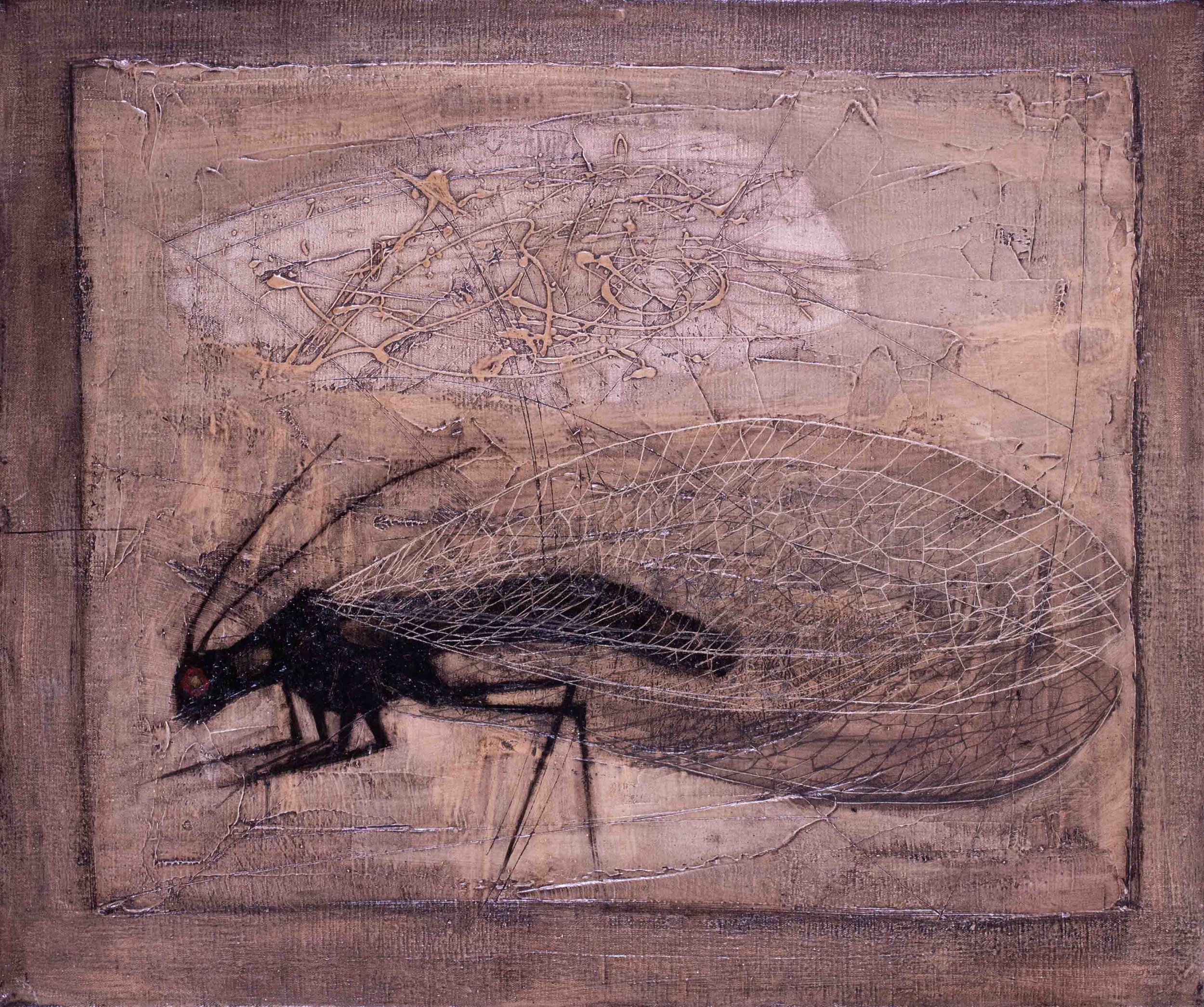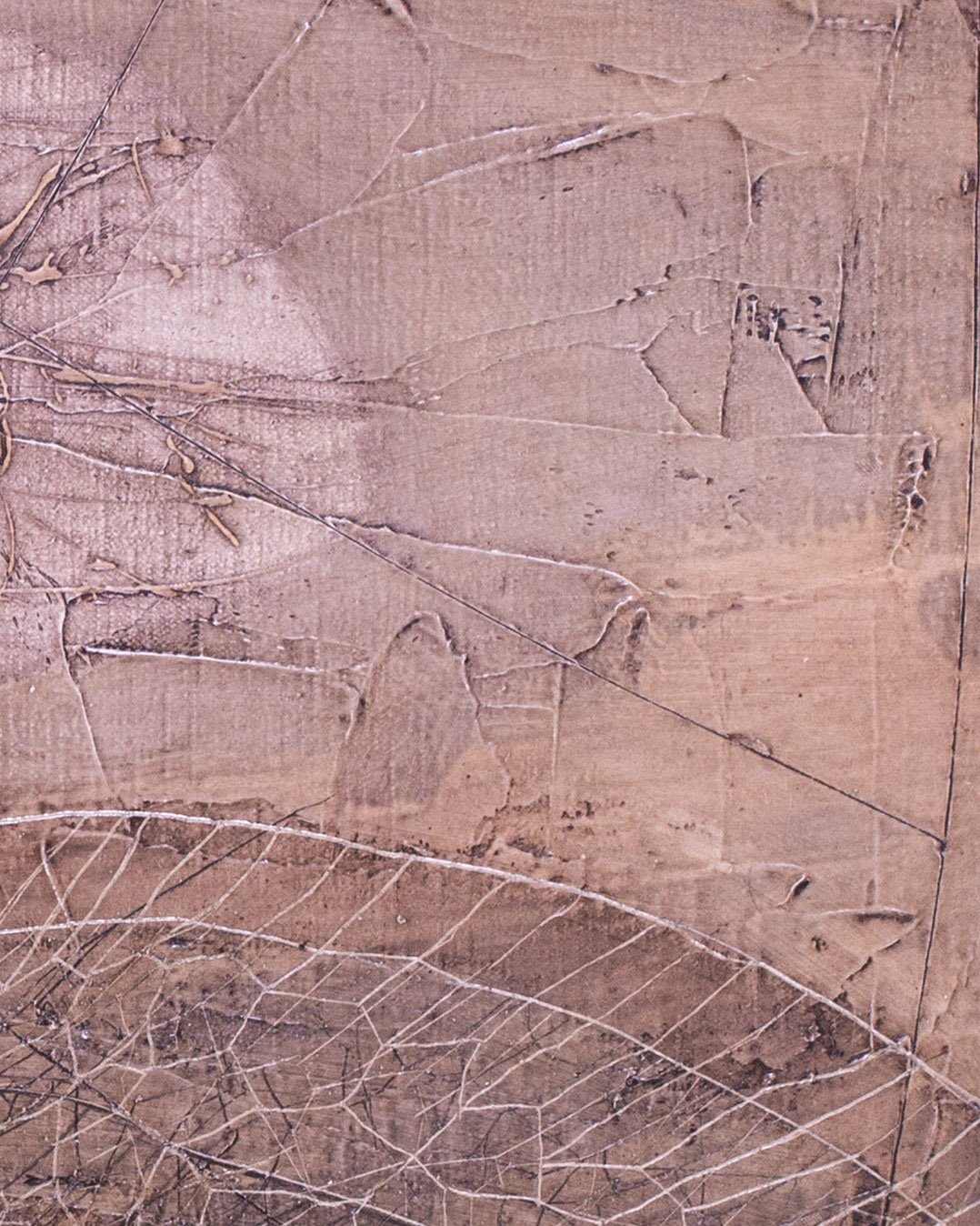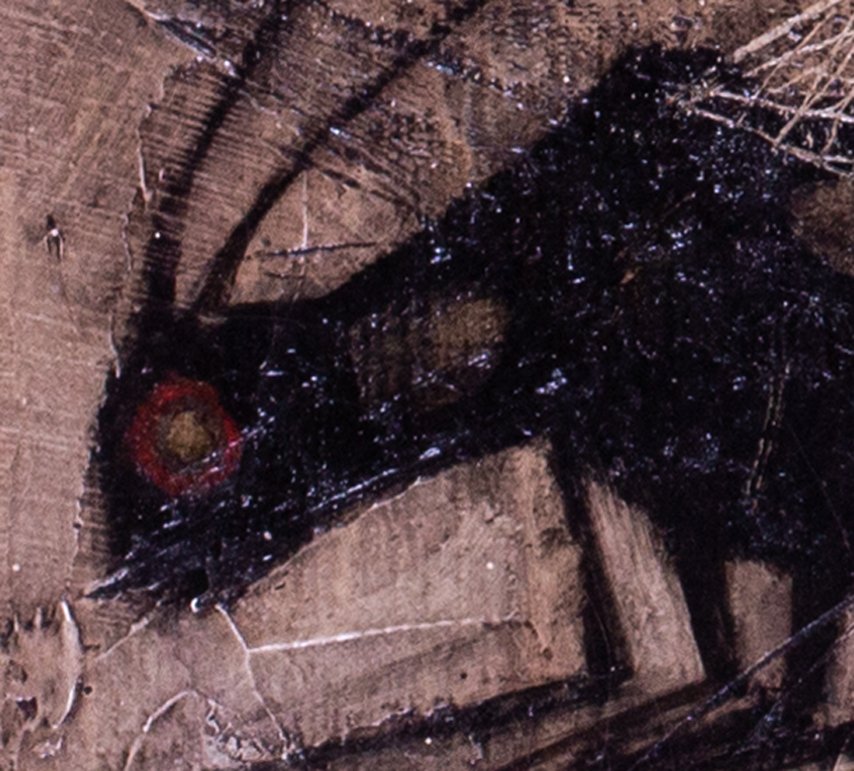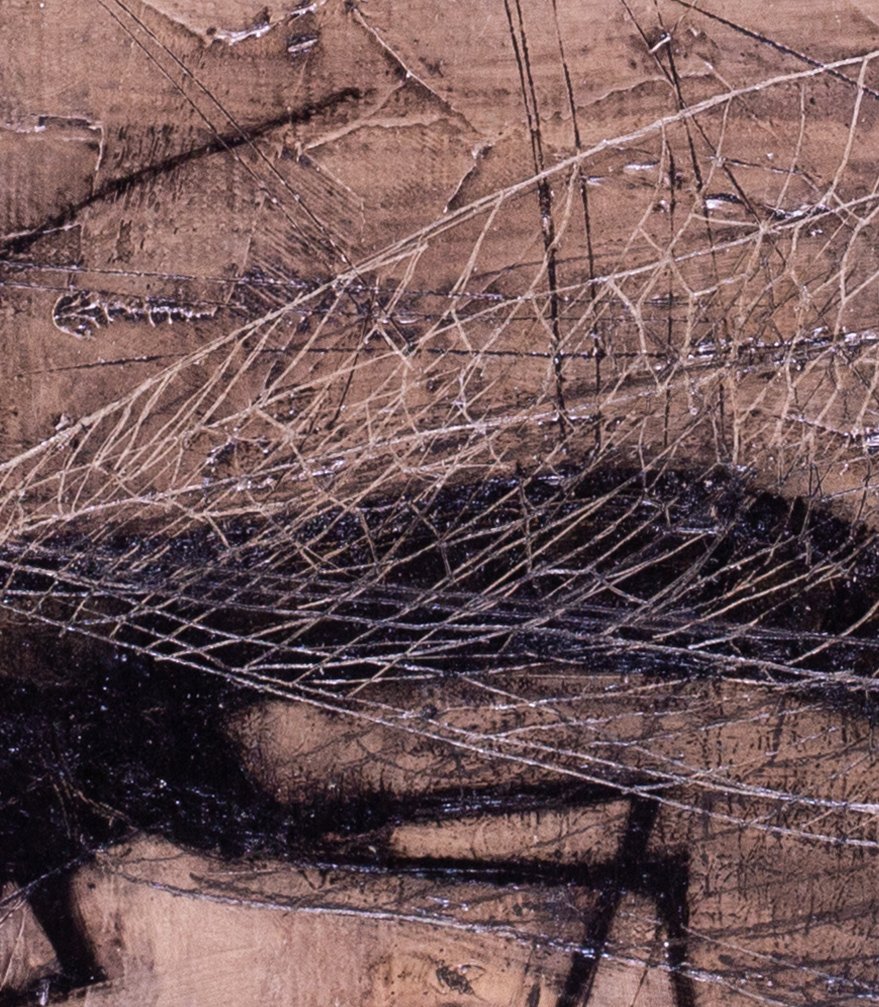Richard William Hamilton, CH, 'Just what is it that makes today's homes so different?'
Richard William Hamilton, CH, (British, 1922-2011)
Just what is it that makes today's homes so different?
Digital print
Signed and numbered `1534/5000 R Hamilton’ (lower edge)
8 x 11.3/8 in. (20.3 x 29 cm.)
This work was produced for the QED programme shown on the 21st April 1993 after Hamiltons original famous `50s collage’.
Hamilton was born in London. He was educated at the Royal Academy Schools from 1938 to 1940, then studied engineering draughtsmanship at a Government Training Centre in 1940, then worked as a 'jig and tool' designer. He returned in 1946 to the Royal Academy Schools, from which he was expelled for 'not profiting from the instruction being given in the painting school' (Hamilton, p.10), then attended the Slade School of Art from 1948 to 1951. An exhibition of his engravings was held at Gimpel Fils, London, in 1950. These were inspired by D'Arcy Wentworth Thompson's 1913 text On Growth and Form which had been republished in 1942 and was a seminal influence on Hamilton's early work. Hamilton devised and designed the exhibitions Growth and Form at the Institute of Contemporary Arts in 1951, and Man, Machine and Motion at the Hatton Gallery, Newcastle upon Tyne and the Institute of Contemporary Arts in 1955. He exhibited at the Hanover Gallery in 1955, and participated in This is Tomorrow at the Whitechapel Gallery in 1956, for which he produced a collage entitled Just what is it that makes today's homes so different, so appealing? for the poster and catalogue. With Victor Pasmore in 1957 he devised and organised an Exhibit, at the Hatton Gallery and the Institute of Contemporary Arts. Hamilton was a member of the Independent Group, formed in the 1950s by a group of artists and writers at the Institute of Contemporary Arts, whose symposiums contributed to the development of Pop art in Britain. He was one of the prime practitioners of the critic Lawrence Alloway's theory of a 'fine/pop art continuum'. Hamilton interpreted this as meaning that 'all art is equal - there was no hierarchy of value. Elvis was to one side of a long line while Picasso was strung out on the other side ... TV is neither less nor more legitimate an influence than, for example, is New York Abstract Expressionism' (Hamilton, p.31). Hamilton taught at the London Central School of Arts and Crafts and University of Newcastle upon Tyne; he gave up teaching full-time in 1966. He designed a typographic version of Duchamp's Green Box, published in 1960, and in 1965-6, with Duchamp's guidance, reconstructed Duchamp's The Bride Stripped Bare by her Bachelors, Even (The Large Glass) (Tate Gallery T02011). Keen to embrace certain types of technology within his art, Hamilton began creating computer-generated works in the 1980s. He has had a long career as a print-maker, and in 1983 won the World Print Council Award. In 1991 he married the artist Rita Donagh. Retrospective exhibitions of Hamilton's work have been held at the Hanover Gallery, 1964, the Tate Gallery, 1970 and 1992, and abroad. He was Britain's representative at the 1993 Venice Biennale.
Richard William Hamilton, CH, (British, 1922-2011)
Just what is it that makes today's homes so different?
Digital print
Signed and numbered `1534/5000 R Hamilton’ (lower edge)
8 x 11.3/8 in. (20.3 x 29 cm.)
This work was produced for the QED programme shown on the 21st April 1993 after Hamiltons original famous `50s collage’.
Hamilton was born in London. He was educated at the Royal Academy Schools from 1938 to 1940, then studied engineering draughtsmanship at a Government Training Centre in 1940, then worked as a 'jig and tool' designer. He returned in 1946 to the Royal Academy Schools, from which he was expelled for 'not profiting from the instruction being given in the painting school' (Hamilton, p.10), then attended the Slade School of Art from 1948 to 1951. An exhibition of his engravings was held at Gimpel Fils, London, in 1950. These were inspired by D'Arcy Wentworth Thompson's 1913 text On Growth and Form which had been republished in 1942 and was a seminal influence on Hamilton's early work. Hamilton devised and designed the exhibitions Growth and Form at the Institute of Contemporary Arts in 1951, and Man, Machine and Motion at the Hatton Gallery, Newcastle upon Tyne and the Institute of Contemporary Arts in 1955. He exhibited at the Hanover Gallery in 1955, and participated in This is Tomorrow at the Whitechapel Gallery in 1956, for which he produced a collage entitled Just what is it that makes today's homes so different, so appealing? for the poster and catalogue. With Victor Pasmore in 1957 he devised and organised an Exhibit, at the Hatton Gallery and the Institute of Contemporary Arts. Hamilton was a member of the Independent Group, formed in the 1950s by a group of artists and writers at the Institute of Contemporary Arts, whose symposiums contributed to the development of Pop art in Britain. He was one of the prime practitioners of the critic Lawrence Alloway's theory of a 'fine/pop art continuum'. Hamilton interpreted this as meaning that 'all art is equal - there was no hierarchy of value. Elvis was to one side of a long line while Picasso was strung out on the other side ... TV is neither less nor more legitimate an influence than, for example, is New York Abstract Expressionism' (Hamilton, p.31). Hamilton taught at the London Central School of Arts and Crafts and University of Newcastle upon Tyne; he gave up teaching full-time in 1966. He designed a typographic version of Duchamp's Green Box, published in 1960, and in 1965-6, with Duchamp's guidance, reconstructed Duchamp's The Bride Stripped Bare by her Bachelors, Even (The Large Glass) (Tate Gallery T02011). Keen to embrace certain types of technology within his art, Hamilton began creating computer-generated works in the 1980s. He has had a long career as a print-maker, and in 1983 won the World Print Council Award. In 1991 he married the artist Rita Donagh. Retrospective exhibitions of Hamilton's work have been held at the Hanover Gallery, 1964, the Tate Gallery, 1970 and 1992, and abroad. He was Britain's representative at the 1993 Venice Biennale.
Richard William Hamilton, CH, (British, 1922-2011)
Just what is it that makes today's homes so different?
Digital print
Signed and numbered `1534/5000 R Hamilton’ (lower edge)
8 x 11.3/8 in. (20.3 x 29 cm.)
This work was produced for the QED programme shown on the 21st April 1993 after Hamiltons original famous `50s collage’.
Hamilton was born in London. He was educated at the Royal Academy Schools from 1938 to 1940, then studied engineering draughtsmanship at a Government Training Centre in 1940, then worked as a 'jig and tool' designer. He returned in 1946 to the Royal Academy Schools, from which he was expelled for 'not profiting from the instruction being given in the painting school' (Hamilton, p.10), then attended the Slade School of Art from 1948 to 1951. An exhibition of his engravings was held at Gimpel Fils, London, in 1950. These were inspired by D'Arcy Wentworth Thompson's 1913 text On Growth and Form which had been republished in 1942 and was a seminal influence on Hamilton's early work. Hamilton devised and designed the exhibitions Growth and Form at the Institute of Contemporary Arts in 1951, and Man, Machine and Motion at the Hatton Gallery, Newcastle upon Tyne and the Institute of Contemporary Arts in 1955. He exhibited at the Hanover Gallery in 1955, and participated in This is Tomorrow at the Whitechapel Gallery in 1956, for which he produced a collage entitled Just what is it that makes today's homes so different, so appealing? for the poster and catalogue. With Victor Pasmore in 1957 he devised and organised an Exhibit, at the Hatton Gallery and the Institute of Contemporary Arts. Hamilton was a member of the Independent Group, formed in the 1950s by a group of artists and writers at the Institute of Contemporary Arts, whose symposiums contributed to the development of Pop art in Britain. He was one of the prime practitioners of the critic Lawrence Alloway's theory of a 'fine/pop art continuum'. Hamilton interpreted this as meaning that 'all art is equal - there was no hierarchy of value. Elvis was to one side of a long line while Picasso was strung out on the other side ... TV is neither less nor more legitimate an influence than, for example, is New York Abstract Expressionism' (Hamilton, p.31). Hamilton taught at the London Central School of Arts and Crafts and University of Newcastle upon Tyne; he gave up teaching full-time in 1966. He designed a typographic version of Duchamp's Green Box, published in 1960, and in 1965-6, with Duchamp's guidance, reconstructed Duchamp's The Bride Stripped Bare by her Bachelors, Even (The Large Glass) (Tate Gallery T02011). Keen to embrace certain types of technology within his art, Hamilton began creating computer-generated works in the 1980s. He has had a long career as a print-maker, and in 1983 won the World Print Council Award. In 1991 he married the artist Rita Donagh. Retrospective exhibitions of Hamilton's work have been held at the Hanover Gallery, 1964, the Tate Gallery, 1970 and 1992, and abroad. He was Britain's representative at the 1993 Venice Biennale.

